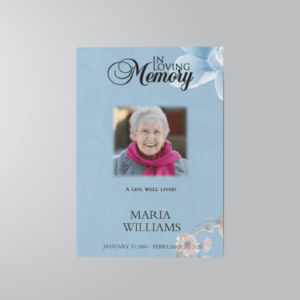Obituary in Spanish Examples: Honoring Loved Ones with Eloquent Tributes
When a loved one passes away, expressing your feelings and memories through an obituary can be a deeply meaningful way to honor your life. In Spanish-speaking cultures, obituaries (esquelas or necrológicas) play a vital role in commemorating the deceased. These obituaries often blend formal language with personal anecdotes, creating a heartfelt tribute.
Why Are Spanish Obituaries Important?
Spanish obituaries serve as a way to inform the community about a person’s passing, but they also provide a space to celebrate the life of the deceased. They typically include details such as the person’s name, age, date of birth, date of passing, and information about their family. They may also include funeral or memorial service details.
Structure of Spanish Obituaries
Spanish obituaries often follow a specific structure:
Announcement of Death: The obituary begins with a formal announcement of the person’s passing, including their full name, age, and date of death.
Biographical Information: This section provides a brief overview of the person’s life, including their birth date, place of birth, and any significant accomplishments or contributions they made during their lifetime.
Family Information: The obituary may include details about the person’s family members, such as their spouse, children, and grandchildren. It may also mention other relatives or close friends.
Funeral or Memorial Service Details: This section provides information about the funeral or memorial service, including the date, time, and location. It may also include any special requests or instructions from the family.
Closing Thoughts: The obituary typically closes with a heartfelt message from the family, expressing their gratitude for the support and love they have received during this difficult time.
Examples of Spanish Obituaries
Example 1:
“Con profundo pesar, la familia de [Nombre del fallecido] anuncia su fallecimiento el [fecha de fallecimiento]. Nacido el [fecha de nacimiento], [Nombre] deja un legado de amor y bondad. Le recordaremos siempre por su sonrisa contagiosa y su corazón generoso. La misa fúnebre se llevará a cabo el [fecha y hora], en [lugar]. Descansa en paz, querido [Nombre].”
Example 2:
“Ha fallecido en paz [Nombre del fallecido] el [fecha de fallecimiento], a la edad de [edad]. Nacido el [fecha de nacimiento], [Nombre] deja atrás a su amada familia, incluyendo a [cónyuge, hijos, nietos]. Su legado perdurará en nuestros corazones para siempre. La ceremonia fúnebre se llevará a cabo el [fecha y hora], en [lugar]. Siempre te recordaremos, querido [Nombre].”
Example 3:
“Con profundo dolor, anunciamos el fallecimiento de nuestro querido [Nombre del fallecido], quien dejó este mundo el [fecha de fallecimiento]. Nacido el [fecha de nacimiento], [Nombre] fue un ser querido y respetado por todos quienes lo conocieron. Su partida deja un vacío imposible de llenar. La velación se llevará a cabo el [fecha y hora], en [lugar]. Descansa en paz, [Nombre].”
Obituary Pamphlets
When creating obituary pamphlets, examples serve as invaluable guides, offering inspiration and structure. They showcase different styles, layouts, and content choices, helping individuals design personalized and meaningful tributes. Examples can also provide ideas for incorporating photos, quotes, and memories, making the pamphlet a heartfelt keepsake. Additionally, they demonstrate how to strike a balance between honoring the deceased’s life and providing practical information about the funeral or memorial service. By studying examples, individuals can create obituary pamphlets that beautifully capture the essence of their loved one’s life.























































